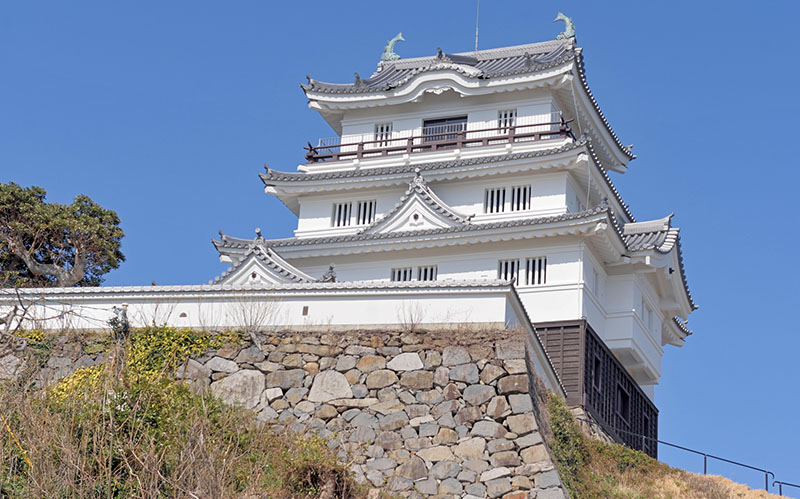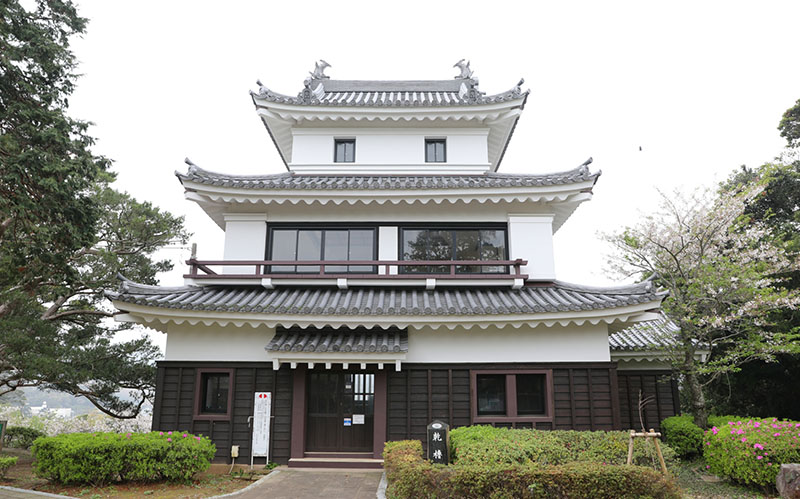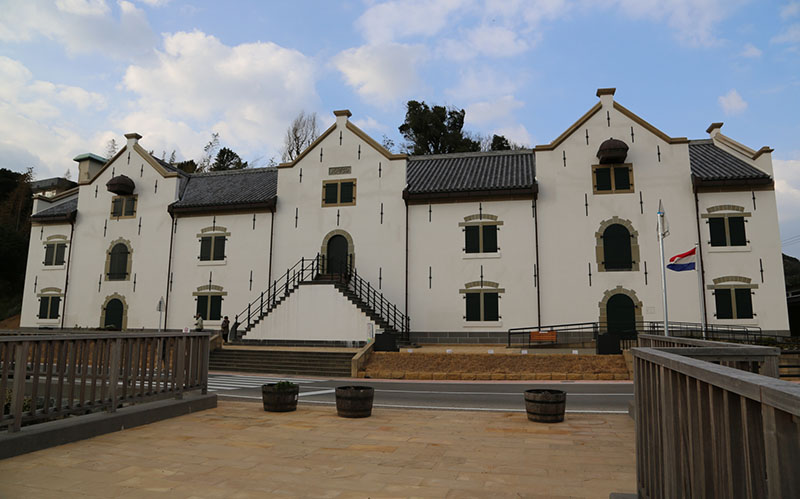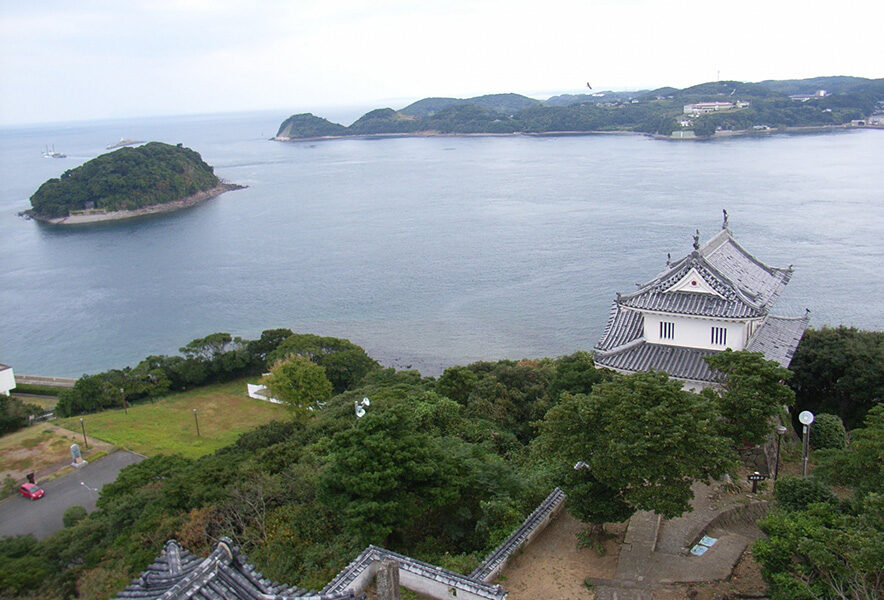- What kind of castle is “Hirado Castle”? The castle was destroyed by fire when it was about to be completed by the castle’s builder.
- Rebuilding “Hirado Castle!” Yamaga-style castle revived 100 years after it was burned down
- What can be seen at Hirado Castle today? At the ruins of the castle, you can see the keep, turrets, stone walls, etc.
- Let’s learn about the history of Hirado! Facilities around Hirado Castle are also introduced.
- Access to Hirado Castle
- Parking around Hirado Castle
- Hirado Castle Official Website
- Recommended around Hirado Castle
What kind of castle is “Hirado Castle”? The castle was destroyed by fire when it was about to be completed by the castle’s builder.
Hirado Castle was a castle built on a mountain or hill in Hirado City, Nagasaki Prefecture, and now remains in Kameoka Park as a castle ruin.
Construction of the castle began in 1599, the year before the “Battle of Sekigahara,” known as the battle that divided the country, and was initiated by Shigenobu Matsuura, a feudal lord in the Hizen Province.
He and his father, Takanobu, expanded the power of the Matsuura clan (Hirado Matsuura clan) and became feudal lords in the Warring States period, and became the lord of the Hirado domain in the Edo period.
Although he was such a great lord, he set fire to the nearly completed Hirado Castle in 1613, burning most of the castle to the ground.
It is said that this was either to clear the suspicion of the shogunate because the Matsuura clan was close to the Toyotomi clan, or because his successor, Hisanobu, had died.
Thereafter, the administration office of the Hirado clan was located in a mansion on the north side of Hirado harbor.

Rebuilding “Hirado Castle!” Yamaga-style castle revived 100 years after it was burned down
In 1718, 105 years after it was destroyed by fire in 1613, “Hirado Castle” was rebuilt.
In 1702, the fourth lord of the domain, Shigenobu Matsuura (great-grandson of the first lord, Shigenobu Matsuura), received permission from the shogunate to rebuild the castle, and construction was begun in 1705 by the fifth lord, Mune Matsuura (Takashi Matsuura, eldest son of Shigenobu).
The Shogunate’s approval for the construction of the castle was very rare in the mid-Edo period (the Shogun at that time was the 5th Shogun, Tsunayoshi Tokugawa), and it is said that the reason was due to the necessity to have a relationship with the Tokugawa family by marriage and to guard the East China Sea.
The castle was built under the guidance of Yamaga Takamoto (bastard son of Yamaga Sogyo, a military scholar), who was a master of the Yamaga school of military tactics, and Hirado Castle was the only Hirado castle built in the Yamaga school.
It is said that approximately 543,000 people were involved in the construction of the castle during the 13 years until 1718, when it was completed.
What can be seen at Hirado Castle today? At the ruins of the castle, you can see the keep, turrets, stone walls, etc.
In 1871 during the Meiji Era, Hirado Castle was abandoned due to the “Abolition of Castle Order”.
At that time, the castle tower and turrets were dismantled, but the “Raccoon Yagura” and “North Toraguchimon” were left intact.
The “raccoon dog turret” (officially named Tamon turret) is the only turret remaining from the Edo period, and was called “raccoon dog turret” because a raccoon disguised as a peasant asked the lord of the castle to let him live in it during the repair work.
The “North Toraguchimon” is a very important gate protecting the north side of the castle, and is the only wooden structure still in existence.
The other buildings are mostly reconstructions, but there is a “mock castle keep” that serves as a museum and archive, and the “Kaisyu Yagura” where visitors can stay overnight while enjoying a view of Shirahama Harbor.

Let’s learn about the history of Hirado! Facilities around Hirado Castle are also introduced.
When you visit Hirado Castle, be sure to stop by the surrounding facilities as well.
The Nanban trade has been active in Hirado since the Muromachi period (1333-1573), with the arrival of Francisco Xavier in 1550, and the establishment of the Dutch and English trading posts in 1609 and 1613, respectively.
The closure of the English trading post in 1623 and the relocation of the Dutch trading post to Dejima in Nagasaki in 1641 caused the decline of the Nanban trade in Hirado, but the Dutch trading post was restored as the “Hirado Dutch Trading Post” in 2011 from a warehouse built in 1639.
The “Hirado Dutch Trading Post” is located 5 minutes by car from Hirado Castle, and exhibits materials and trade goods related to the trade in those days.
The Matsuura Historical Museum, which exhibits materials related to the Hirado Matsuura Clan, is also located a five-minute drive from Hirado Castle.
This building was formerly the Tsurugamine Residence, the private residence of the Matsuura clan, in 1893.

Access to Hirado Castle
1458-1, Iwanokami-cho, Hirado-shi, Nagasaki 859-5121, Japan
Parking around Hirado Castle
Hirado Castle Official Website
Official site:https://hirado-castle.jp/en/
